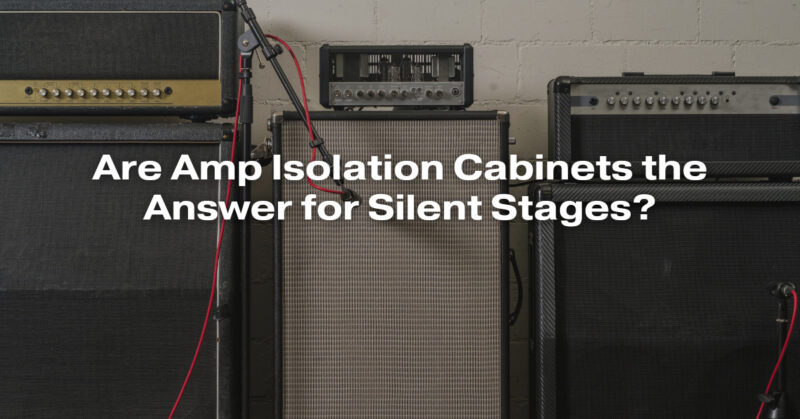Amp isolation cabinets can indeed be a valuable solution for achieving a “silent stage” setup, especially in situations where low stage volume is a priority, such as studio recording, house of worship settings, or venues with strict noise regulations. These cabinets allow you to capture the sound of your guitar amplifier while keeping it at a manageable volume or even completely silent when needed. Here are some key considerations regarding amp isolation cabinets:
Advantages:
- Volume Control: Amp isolation cabinets offer precise control over the amplifier’s volume, allowing you to crank the amp to achieve your desired tone while keeping the overall stage volume low.
- Tonal Integrity: These cabinets are designed to capture the authentic sound of your amplifier without the need for extensive microphone positioning. This ensures that your amp’s unique tone is preserved.
- Mic Simulation: Some isolation cabinets include microphone simulation technology that emulates the sound of a microphone placed in front of the amp’s speaker. This can be useful for achieving consistency in your live sound.
- Reduced Stage Noise: By isolating the amp’s sound within the cabinet, you can drastically reduce the stage noise levels, creating a quieter and more controlled performance environment.
- Recording Flexibility: Amp isolation cabinets are ideal for studio recording, allowing you to capture the amp’s sound directly and independently of any room acoustics or ambient noise.
Considerations:
- Cost: High-quality isolation cabinets can be relatively expensive, so budget considerations are essential.
- Weight and Size: Some isolation cabinets can be heavy and bulky, which may affect portability and setup time.
- Tonal Characteristics: While isolation cabinets aim to capture the amp’s tone accurately, they may not entirely replicate the interaction between the amp and a live speaker cabinet. Some guitarists prefer the “feel” of a traditional speaker cabinet.
- Mic Simulation Quality: The quality of microphone simulation varies among different isolation cabinets. It’s important to choose one that provides the desired tonal accuracy.
- Ventilation and Heat: Tube amplifiers generate heat, and it’s crucial to ensure that the isolation cabinet is adequately ventilated to prevent overheating.
- Microphone Positioning: Even with microphone simulation technology, positioning a microphone in front of the amp’s speaker can still be a preferred method for some guitarists who want full control over the mic’s placement.
- Stage Aesthetics: Isolation cabinets may not have the visual appeal of traditional guitar speaker cabinets, which can be a consideration for some performers.
In summary, amp isolation cabinets are a valuable tool for achieving a “silent stage” and controlling stage volume. They are particularly useful for studio recording and environments where low volume is essential. However, the decision to use an isolation cabinet should take into account factors like cost, tonal preferences, and the specific needs of your playing situation. Experimentation and careful consideration will help you determine whether an isolation cabinet is the right solution for your silent stage requirements.


